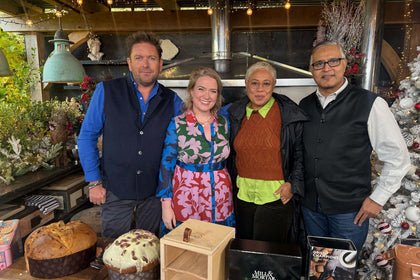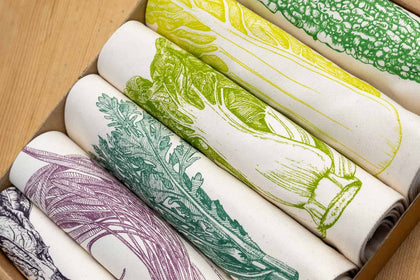Melon Soda: Everything You Need to Know
by Jannika Resido

Melon soda, is a sweet fizzy drink. That tastes of melon! It is a vibrant green colour. In this guide, we will share everything we know about this hugely popular drink.
Introduction to Melon Soda
What is Melon Soda?
It is a sweet, carbonated drink that boasts a bright green hue and the taste of melon. It's a popular soft drink in many parts of the world, particularly in Japan where it's often enjoyed with a scoop of ice cream on top, known as a 'melon soda float'.
The beverage combines soda water with melon flavouring and sugar to create its distinctive taste. The melon flavour is typically derived from either melon syrup or melon-flavoured concentrate.
While variations exist, the most common melon used for the flavouring is the Japanese muskmelon, which lends the drink a refreshing and slightly creamy taste profile. Melon soda serves as a tasty, nostalgic reminder of summer festivals and is a staple in many East Asian eateries, offering a unique blend of sweetness and fizz that tantalises the palate.
The Popularity of Melon Soda
Melon soda's popularity is not just limited to its taste; it's also a visual treat that has become a cultural icon, especially in Japan. The drink's bright, appealing colour and whimsical presentation make it a favourite among children and adults alike. Its popularity has surged beyond its country of origin, capturing the interest of international audiences.
Many Asian-themed restaurants and bubble tea shops around the world now feature melon soda on their menus, often incorporating innovative twists to the classic recipe. Social media has also played a significant role in spreading the drink's appeal, with images of soda floats featuring prominently on platforms like Instagram and the website Pinterest. The drink's blend of sweetness, vibrant presentation, and cultural significance have cemented its status as a beloved beverage in the global soda market.
The History of Melon Soda
Origin of Melon Soda
The origin of melon soda can be traced back to Japan, where it first became popular during the post-war era as Western influences began to blend with Japanese culture. It was during this time that many Western-style cafes, known as "kissaten", started to emerge, offering a range of Western-inspired food and drinks. It was developed as Japan's answer to the American soda fountain culture.
The drink quickly became a hit due to its unique flavour and eye-catching colour, which was a novelty at the time. Over the decades, it has remained a staple in Japanese cafes and has become an integral part of the country’s modern gastronomy. The drink's origins are a testament to the innovation and adaptability of Japanese cuisine, resulting in a beverage that is both a taste sensation and a piece of cultural history.
Evolution of Melon Soda Over the Years
Since its inception, melon soda has evolved in both recipe and cultural significance. From a post-war novelty, it has become an emblematic refreshment served at a variety of venues, from traditional festivals to contemporary cafes. Over time, the basic recipe has been adapted to include different types of melon flavours, such as watermelon and cantaloupe, catering to a wider range of taste preferences.
Additionally, the way melon soda is served has also changed; it's now often garnished with fruit slices or paired with desserts to create Instagram-worthy concoctions. This evolution reflects changing consumer tastes and the influence of global trends. Yet, despite these changes, it has maintained its core identity as a beloved, fizzy drink with a distinctively sweet melon flavour, remaining a timeless favourite in Japan and beyond.
The Making of Melon Soda
Ingredients Used in Melon Soda
The basic ingredients of melon soda are simple, yet they create a drink that's full of flavour. The primary component is melon syrup, typically made from melon flavouring and sugar, which provides the characteristic sweet taste. This syrup is mixed with carbonated water to give the beverage its cool, refreshing fizz. In Japan, the preferred melon flavour comes from muskmelon, which offers a rich and creamy taste that sets it apart from other melon types.
In addition to these core ingredients, melon soda often includes a scoop of vanilla ice cream when served as a float, adding a creamy texture and enhancing the overall sweetness. On occasion, a maraschino cherry or a slice of fresh melon is added as garnish, both for visual appeal and an extra burst of flavour.
Production Process of Melon Soda
The production process of commercial melon soda involves several steps to ensure a consistent and enjoyable product. First, manufacturers create the melon syrup by combining sugar, water, and melon flavouring, often derived from concentrates or artificial flavours to achieve a uniform taste. Once the syrup is ready, it's carefully mixed with carbonated water at a specific ratio to ensure the right balance of sweetness and fizz.
The bottling process must be carried out with precision to maintain the perfect carbonation level, which is crucial for that satisfying pop and effervescence when the bottle is opened. For larger scale production, this process is automated to ensure each bottle has the same quality and flavour profile. At home, melon soda can be made by simply mixing store-bought melon syrup with soda water, allowing for personal adjustments to sweetness and carbonation content.
Melon Soda in Different Cultures
Melon Soda in Japan
Melon soda in Japan is not just a drink; it's a cultural phenomenon. In Japan, it is often associated with youth and fun, commonly found at amusement parks, festivals, and family restaurants. It's a standard offering in "kissaten", where it's sometimes served with a scoop of ice cream to create a float, a nostalgic treat that can perform as a memento of Japan's Showa era. The vibrant green colour of the soda is almost as iconic as its taste, making it a visually appealing addition to any table.
Melon soda also holds a special place in the hearts of many Japanese people as a reminder of their childhoods, representing the simple joy of sipping a cold, fizzy drink on a hot summer day. The enduring popularity in Japan exemplifies its significance as more than just a beverage—it's a part of the country's modern cultural heritage.
Melon Soda in the UK and Other Countries
In the UK and other countries, it is often viewed with curiosity and as an exotic novelty. It's not as widely consumed as in Japan, but it can be found in specialist shops, Asian supermarkets, and at various Japanese restaurants and sushi bars. The UK's multicultural society means there's a growing interest in diverse cuisines and beverages, with melon soda gradually making its way into the British palate, especially amongst those who have a penchant for trying different and unique flavours from around the world.
In other countries, especially in East and Southeast Asia, melon soda is more common and enjoyed in a similar fashion to Japan. As globalisation continues to influence dietary habits and preferences, it's presence in the UK and beyond is likely to increase, introducing more people to enjoy its distinctive, sweet, and fizzy taste.
The Impact of Melon Soda on Health
While melon soda is typically considered a sweet treat rather than a health drink, it can offer some benefits when enjoyed in moderation. For one, the carbonation in it can provide a satisfying alternative for those looking to reduce their alcohol consumption, as it offers the same fizzy sensation as many alcoholic beverages.
Additionally, the cheerful colour and sweet taste of can lift the spirits, providing a sense of enjoyment and a psychological boost. For people who struggle with drinking enough fluids, a glass of melon soda can be find a more appealing way to stay hydrated than plain water.
However, it's important to be mindful of the sugar content in melon soda, as excessive consumption can lead to health issues. Enjoying as an occasional treat rather than a staple can help maintain a balanced diet.

About the author
Jannika Resido is Sous Chef's online content specialist. She is an expert in southeast Asian food and ingredients! Jannika has several years of experience writing blogs and features for online publications. She loves savoury dishes, trying new ingredients (especially the fruity ones!) and discovering recipes from across the world.


